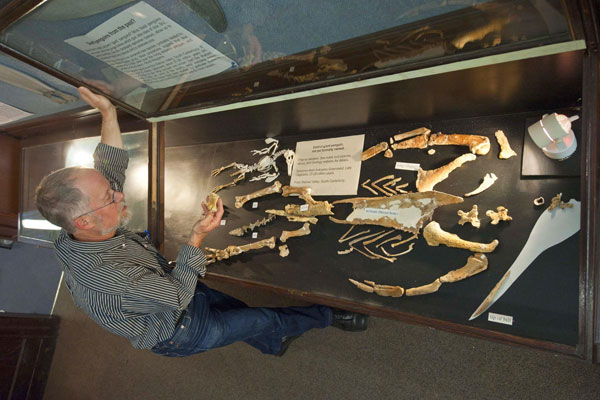 |
| An artist's impression of two Kairuku penguins on the prehistoric beaches of New Zealand with a stranded Waipatia maerewhenua, an archaic species of dolphin |
These remained the subject of intense debate for many years until 2011, Dr Dan Ksepka, from North Carolina State University and North Carolina Museum of Natural Sciences colleague Dr Paul Brinkman travelled to New Zealand to help with the reconstruction of the giant penguin fossil. The new specimen was unlike any other fossil penguin from New Zealand. Its unique physique made reconstruction difficult.
 |
| The fossilised remains of the Kairuku penguin |
This 25 million year old penguin dubbed Kairuku, a Maori word for 'diver who returns with food', is the tallest that has ever lived. 'The location was great for penguins in terms of both food and safety,' said Dr Kepska. What emerges is a more complete picture of these creatures during the Oligocene epoch. As the majority of New Zealand was underwater at that time, the penguins were protected from predators on isolated, rocky land masses, with a plentiful food supply.